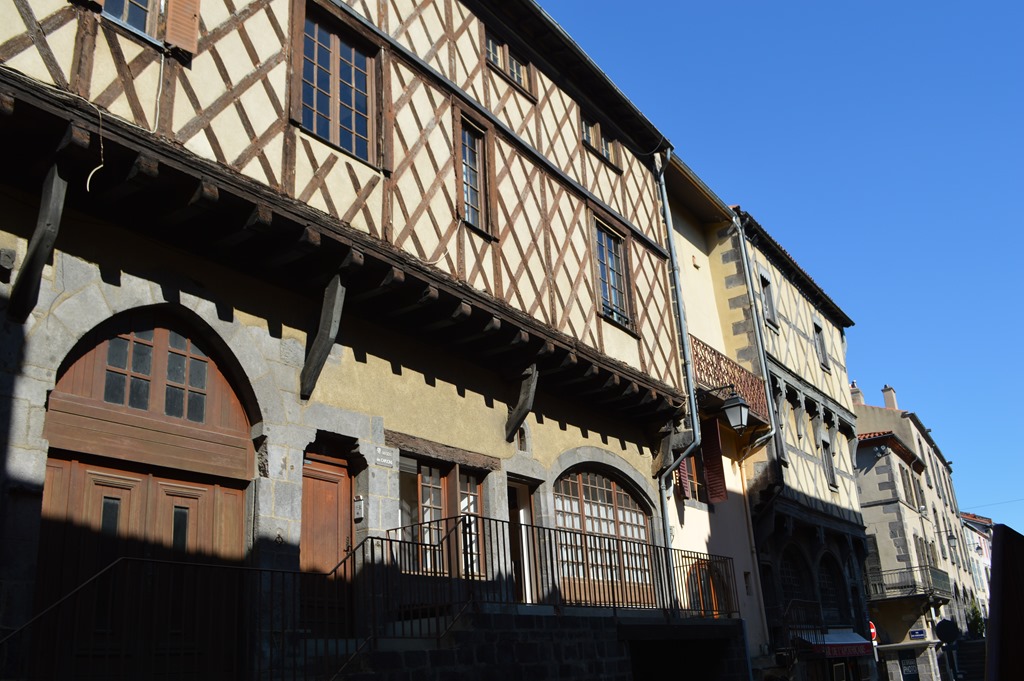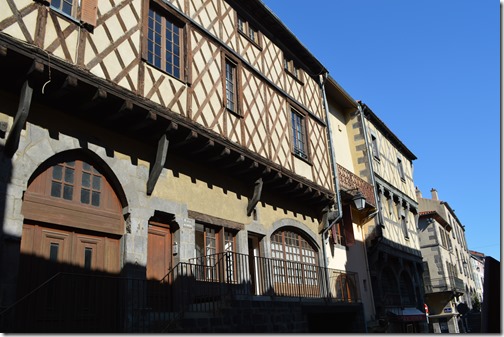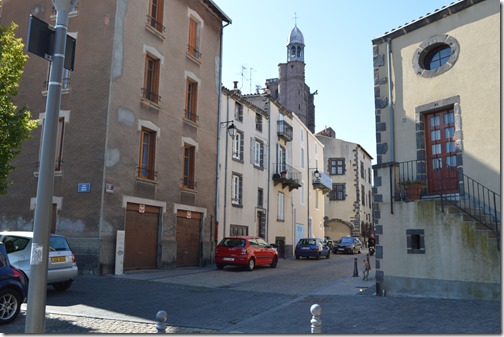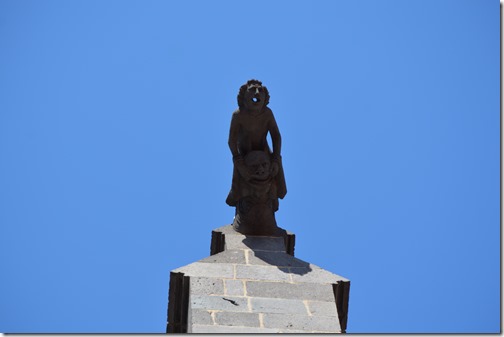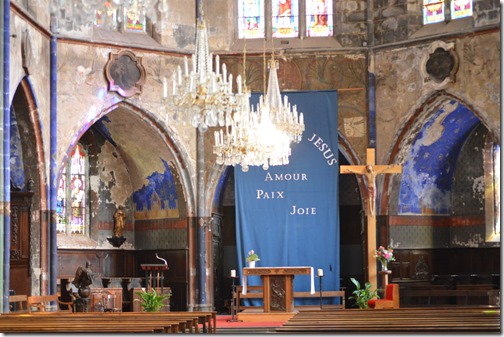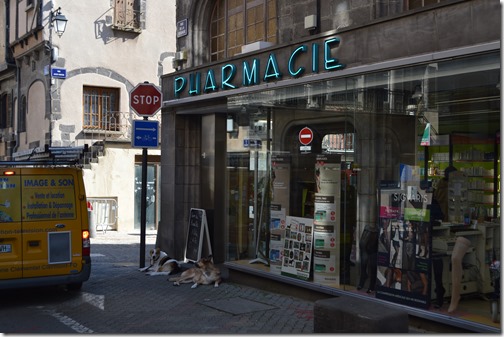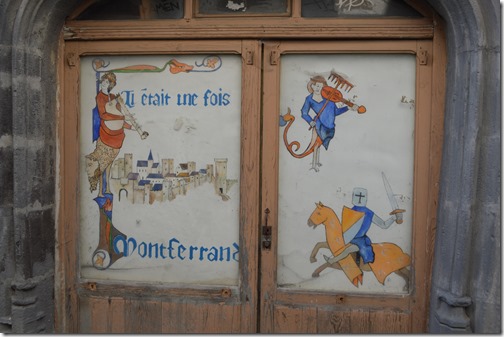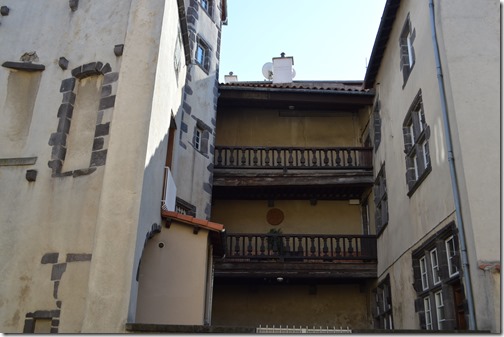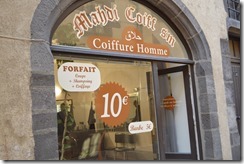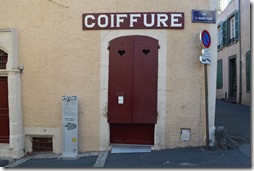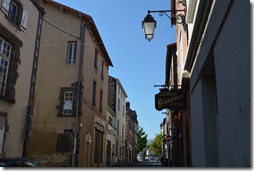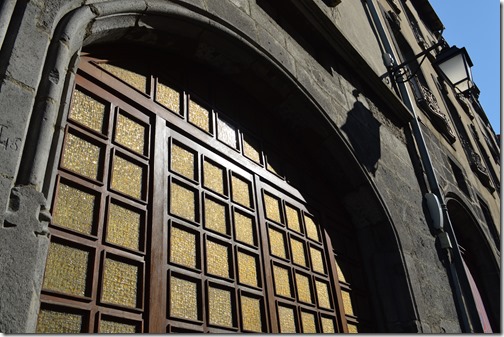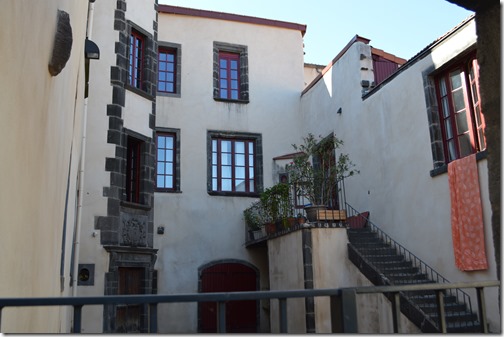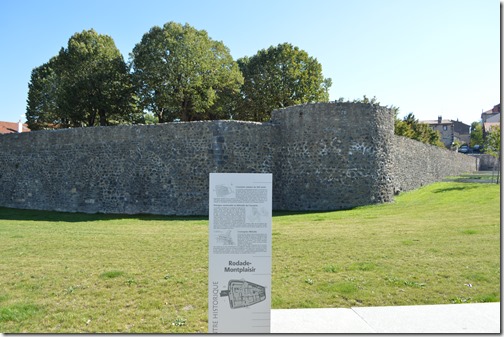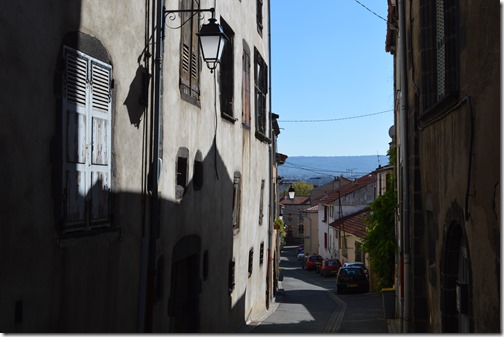One of the major attractions in Clermont-Ferrand, France is the medieval quarter of Montferrand, about two miles from the Clermont-Ferrand cathedral. Clermont and Montferrand developed as two separate towns united through the royal Edict of Troyes signed by King Louis XIII in 1630.
Today the commercial hub of tourism is in the city center around the Clermont-Ferrand cathedral. I caught the city tram to Montferrand for 1.50€ and spent a cloudless sunny afternoon walking through the mostly deserted narrow streets of the historic quarter. Many of the buildings in the Montferrand quarter were constructed in the 1400s and 1500s when the town held a wealthy merchant class.
Montferrand quarter 1508 structure.
There are only three tram stops around the historic quarter of Montferrand center with Le musée d’art Roger–Quilliot (MaRQ) the last one before proceeding into more modern and industrial sections of the city dominated by Michelin tire company. Michelin was founded in 1889 for rubber manufacturing and grew initially through the manufacture of bicycle tires before becoming a world leader in vehicle tires. This part of Clermont-Ferrand became the industrial manufacturing site for Michelin and remains the company global headquarters. Michelin industrial sites dominate much of the area surrounding the historic quarter of Montferrand.
Michelin tire company old manufacturing site in Montferrand, across the street from the historic quarter.
All Alone in Montferrand
On a late September weekday afternoon I found myself mostly alone in Montferrand. The experience was quite a contrast to walking the crowded streets of Paris the day before. The sensation was strange to walk through a tourist site with no tourists. The old quarter of Montferrand is mostly residential housing with few businesses.
Sun dried laundry.
The tallest building in the Montferrand quarter is the Catholic church Notre-Dame-de-Prosperite built between 1304-1566. It is a French historical monument. Like many of the older buildings in Clermont-Ferrand, the church is constructed largely from andesite, Volvic lava rock named for the town in the Auvergne region where the stone is quarried.
Bell tower of Notre-Dame-de-Prosperite and example of decorative Volvic lava stone (andesite) around the windows and doors of a house in Montferrand.
Gargoyle on Notre-Dame-de-Prosperite
Inside Notre-Dame-de-Prosperite.
The narrow streets in the historic quarter are quite the challenge for cars to drive. Staying out of the way of cars was tough when I was one of a handful of people on the streets. I can’t imagine what the place is like in early August when tourism season is in full swing.
Main intersection of the Montferrand old quarter on a lazy dog September afternoon.
As I walked the narrow streets around old houses, I was struck by how so many of the businesses I saw in the historic quarter were coiffures. I could not imagine how such a small place could support so many beauty shops when most streets I walked were empty of other pedestrians. The abundance of coiffures had me chuckling as I walked by another hairdresser/barber on nearly every street. I spent the next couple of days noticing how most of the people in Clermont-Ferrand are well-groomed with great hair.
My photos don’t capture the breathtaking sunlight on the buildings that enchanted me as I walked up and down streets criss-crossing Montferrand for a couple of hours.
Shadow and light.
Another Montferrand house with Volvic andesite decorative features.
Remains of the 15th/16th century Montferrand walls. The town had a population of 4,000 in the 13th century and 5,000 residents in 1911 after the Michelin factories were built.
Not much has changed in sleepy Montferrand over the centuries.
A brief English language history can be found at Montferrand: eight centuries of history.


